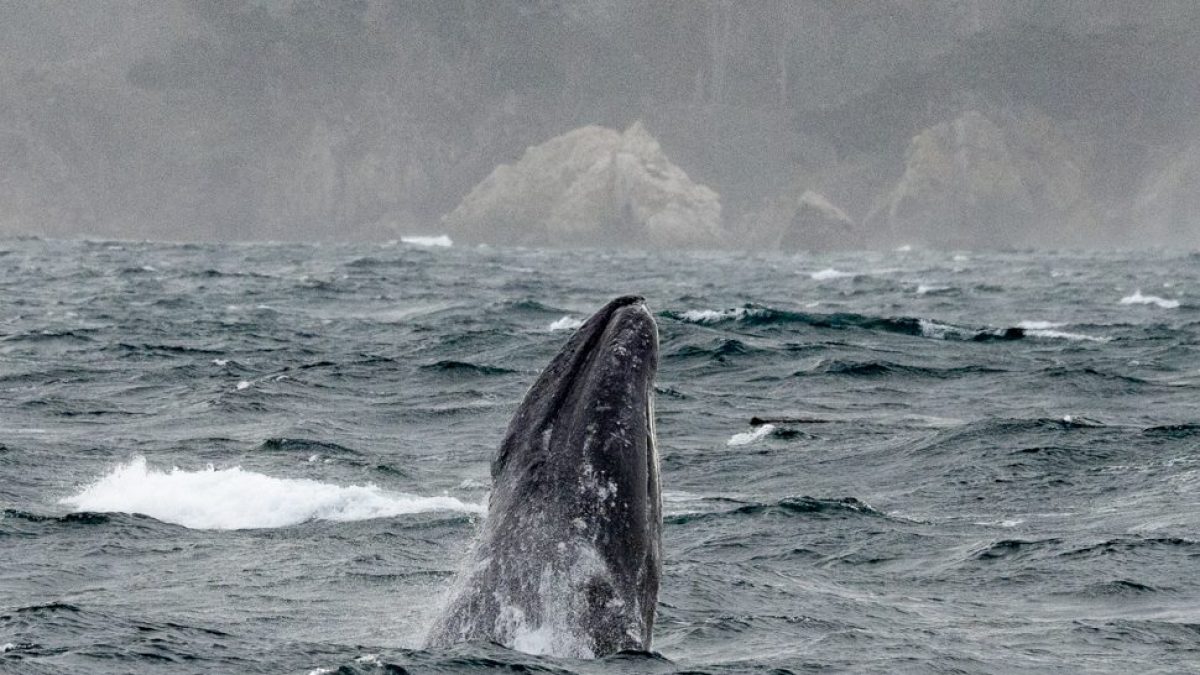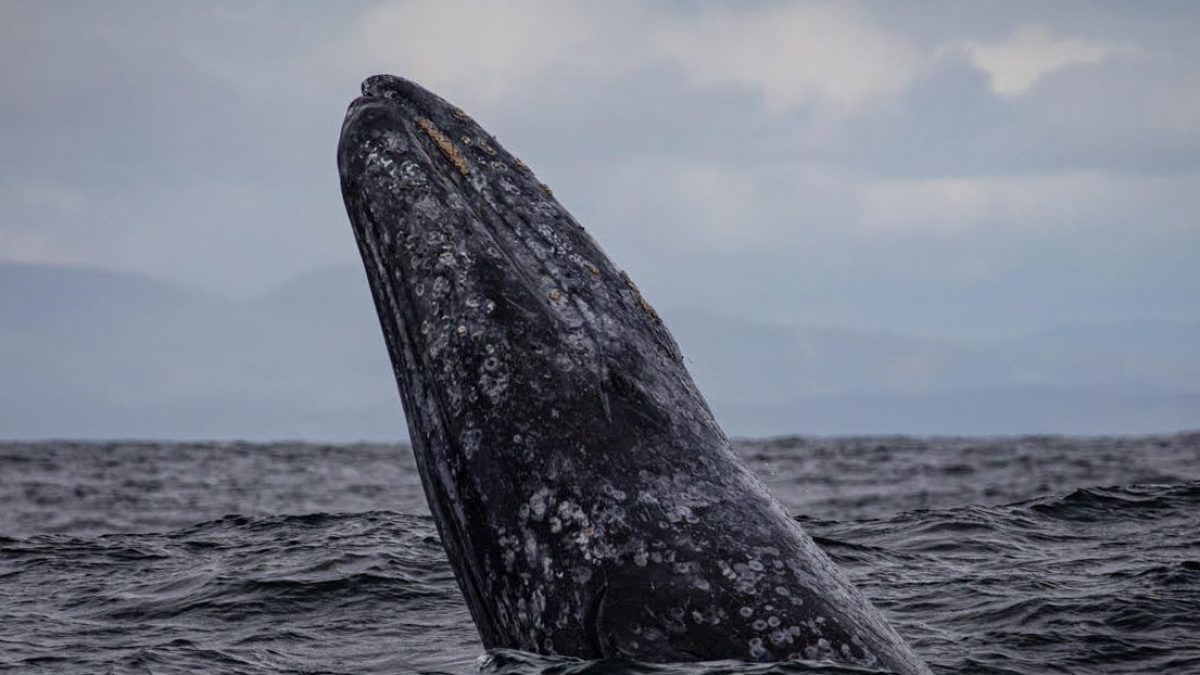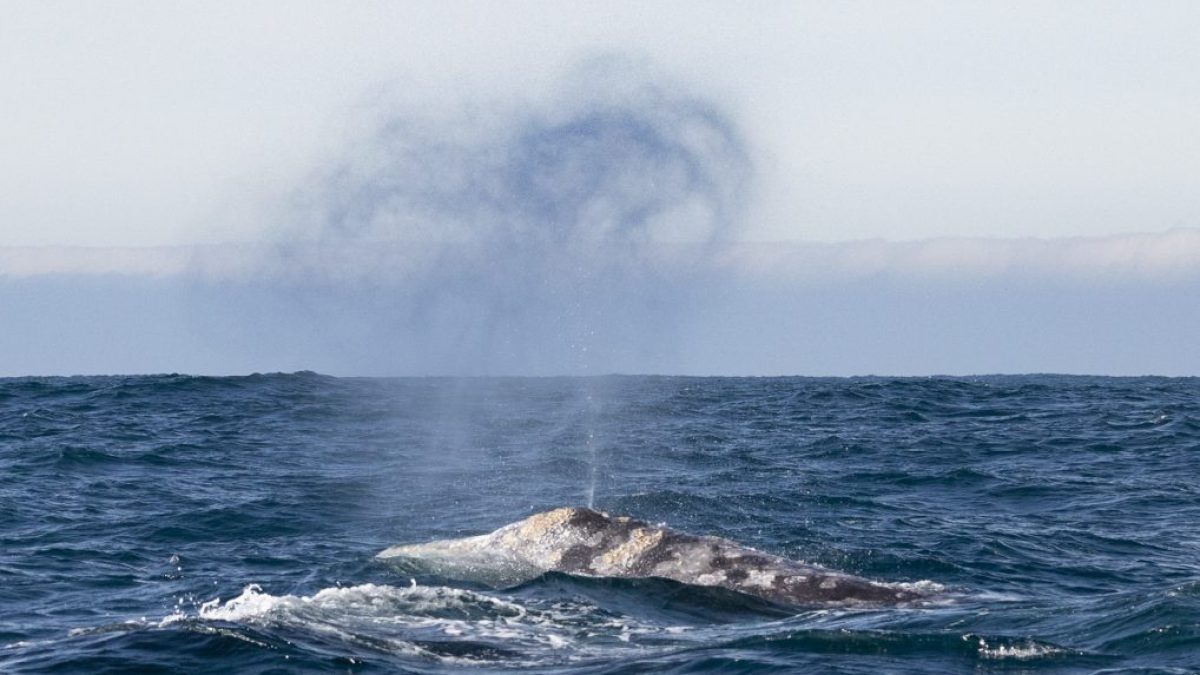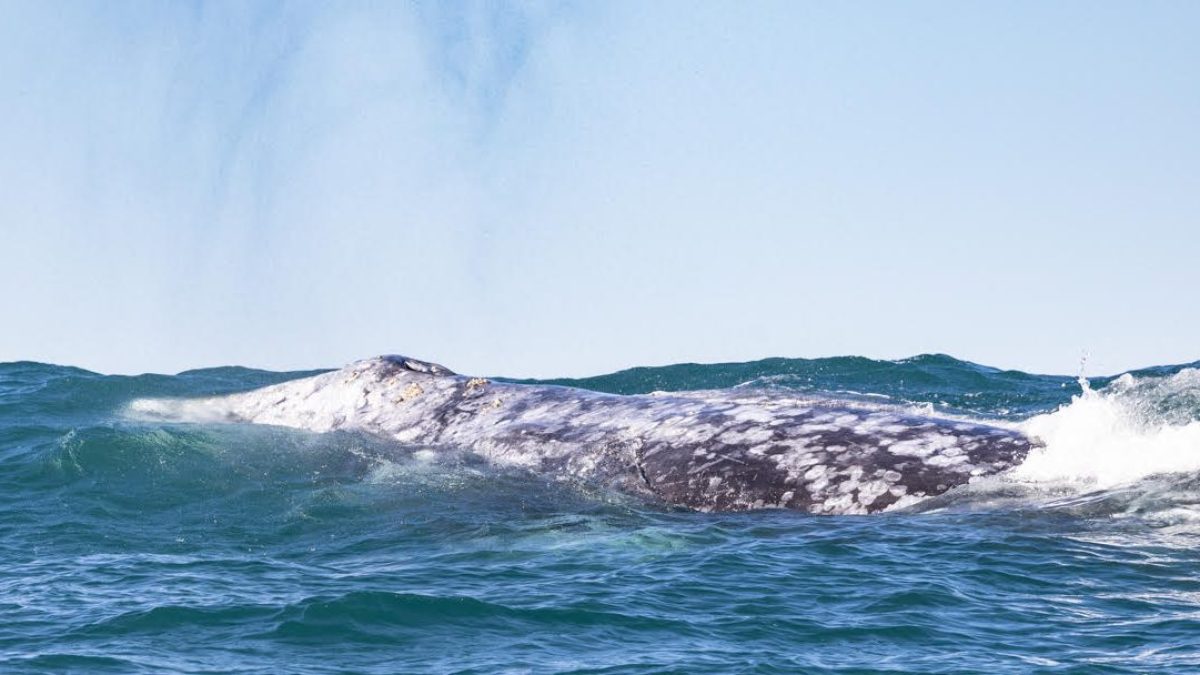Gray whales have one of the longest animal migrations, traveling over 12,000 miles from their Summer feeding grounds in the Bering Sea to their Winter breeding grounds in Baja California where they make another 12,000 mile journey north during Spring, rarely eating on the way. Due to this, we collect data on Gray Whale health for any signs of starvation and their migration direction to note any change between years.
Gray Whales are present off Monterey from December through May with peak numbers occurring from mid January and mid March. During April and May, Bigg’s Killer Whales are actively searching to predate on Gray Whale calves, so Gray Whales use tactics to avoid detection by Bigg’s: traveling deeper in the ocean and “snorkeling” by staying close to the surface which reduces their blow height. These behaviors decrease our and Killer Whale chances to spot Gray Whales during their northbound migration.
![]() Diet
Diet
Seafloor (Benthic) Invertebrates, Krill
![]() Population Status | Monterey
Population Status | Monterey
Delisted: Recovered
![]() Legal Protection
Legal Protection
Marine Mammal Protection Act, National Marine Protected Area Act
![]() Threats
Threats
Human Related Loss (Habitat Loss, Ocean Noise, Hunting, Food Source Loss, Climate Change, Disturbance, Entanglement, Harassment, Oil Spills, Pollution, Boat Strikes, Collisions)
![]() Size
Size
49ft
![]() Weight
Weight
80,000 lb
BEHAVIORS
-
Feeding
-
Fluke
-
Mating
-
Breaching




